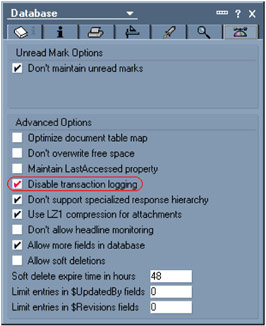8.8 Best practices
|
| < Day Day Up > |
|
8.8 Best practices
-
Split Server by function - when you have more than one Domino server in your organization, we recommend that you dedicate each server to special task. That means you would have a server for Notes mailing, another for applications, one as hub or administration server, and a server for POP3.
-
Selective Clustering - a Domino cluster is a group of two or more servers that provides users with constant access to data, balances the workload between servers, improves server performance, and maintains performance when you increase the size of your enterprise.
The servers in a cluster contain replicas of databases that you want to be readily available to users at all times. If a user tries to access a database on a cluster server that is not available, Domino opens a replica of that database on a different cluster server, if a replica is available. Domino continuously synchronizes databases so that whichever replica a user opens, the information is always the same.
You may selectively cluster in order to get high availability of important databases. When a hardware or software problem occurs, clustered servers redirect database open requests to other servers in the cluster to provide users with uninterrupted access to important databases. This process is called fail-over. Clusters provide fail-over for business-critical databases and servers. Fail-over also lets you perform server maintenance, such as hardware and software upgrades.
-
Regular cleanup
-
It is recommended to compress core dumps using gzip to save diskspace - gzip [files]
-
It is a good practice to regularly clean up old core dumps and NSDs, especially after they have been shipped to Lotus Support.
-
-
Disable transaction logging for the mail.boxes by issuing the command compact -t mail.box, or by disabling it in the database property box of the mailboxes, as shown in Figure 8-25.

Figure 8-25: Database properties for mail.boxNote Remember that you have to do this every time a mail.box gets created!
-
Implement at least two mail.boxes on your mail servers.
-
Review your notes.ini and remove and tasks that you will not be using.
-
Anti-spam for Mail environment. Refer to Lotus Domino 6 Spam Survival Guide, SG24-6930.
-
Define a service level agreement (SLA) with your customer (Notes users).
|
| < Day Day Up > |
|
EAN: 2147483647
Pages: 162